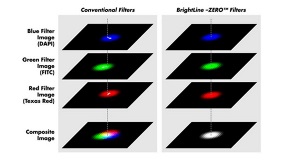-
MarvelX Brochure (Chinese)
by IDEX Health & Science使用 IDEX Health & Science 手拧式 MarvelX™ UHPLC 连接技术,提升您流体系统的性能
Full story
-
Imaging & Illumination Subsystems Brochure
by IDEX Health & ScienceHow can you avoid the uncertainties of off-the-shelf components that may not be characterized sufficiently to define your system’s optical path? For an instrument to operate at its full potential, each component must interact seamlessly with all other components. When integration is forced with independently developed components, the system will not be optimized for best performance. Using our in-house design and manufacturing capabilities, we develop optimal designs with your whole system in mind from the start. Our experts create innovative optical solutions that balance price and performance, meet development timelines, and exceed expectations.
Full story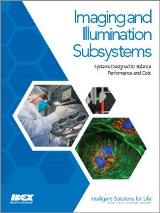
-
IDEX Health & Science Fluidics Idea Book
by IDEX Health & ScienceIDEX Health & Science seeks to reduce the design burden, as we offer a large number of fluidic components suitable for the Life Science markets, and we assist OEM developers in the integration and optimization of these components during their instrument development process.
Full story
-
Historic CVI Melles Griot Tech Guide
by IDEX Health & ScienceThe historic tech guide was used across colleges and universities for years and we’ve heard the calls from professors and students alike to make it downloadable again. We hope you find this information helpful and educational and look forward to collaborating with you in the future.
Full story
-
Film Degasser Brochure (English)
by IDEX Health & ScienceOur Film Degasser uses patented, cutting-edge technology that gives you powerful performance control with increased solvent compatibility. Utilizing a high-efficiency membrane and unique flow channel design, it provides the lowest fluidic resistance in the industry.
Full story
-
Film Degasser Brochure (Japanese)
by IDEX Health & Scienceフィルムデガッサーは特許技術の高効率膜と流路設計で 高い脱気効率と耐薬品性、業界最小レベルの低圧力損失を実現しました。
Full story
-
Film Degasser Brochure (Chinese)
by IDEX Health & Science我们的平面薄膜脱气机使用尖端的技术,可为您提供强大的性能控 制并增加了溶剂的兼容性。 利用高效膜和新颖的流道设计,它提供了 非常低的流体阻力。
Full story
-
Degassing Brochure
by IDEX Health & ScienceIDEX Health & Science degassers improve fluidic instrument precision and reliability by removing dissolved gases from fluids before they outgas and form problem-causing bubbles.
Full story
-
Custom Microscope Objectives Brochure
by IDEX Health & ScienceExplore custom microscope objectives with IDEX Health & Science. We are happy to work with you to provide a cost-competitive custom microscope objective solution that is ideally suited to your specific application. We guarantee superior imaging performance and repeatability in volume production.
Full story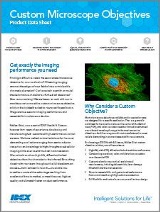
-
COVID-19 Solutions Brochure
by IDEX Health & Science -
IH&S Corporate Brochure
by IDEX Health & Science -
Choosing Dichroic Beamsplitters with Flatness/RWE Appropriate to the Microscopy Method
by IDEX Health & ScienceWavefront distortion can degrade image quality by reducing contrast or compromising resolution. In several microscopy applications, reducing wavefront distortion is critical to achieving the microscopy method. Specifying and selecting optical filters that minimize wavefront aberration is important to maximize or enable optical system performance. This article elucidates how to select optical filters for high performance microscopy, and provides guidance on choosing Semrock catalog filters for wavefront distortion performance required for applications.
Full story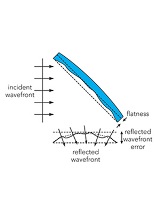
-
Multiband Filter Set Terminology
by IDEX Health & ScienceThere are three types of multiband filter sets for simultaneous multi-color imaging -- the "full-multiband", the "Pinkel", and the "Sedat".
Full story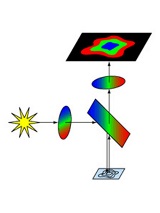
-
Fittings Primer
by IDEX Health & ScienceA guide to fittings selection to determine most compatible fitting for your application. Learn about stainless steel vs peek materials, threads, unions, and more.
Full story
-
Understanding Polarization
by IDEX Health & ScienceIn this article our aim is to answer some basic questions about the polarization of light, including: what polarization is and how it is described, how it is controlled by optical components, and when it matters in optical systems.
Full story
-
Super-Resolution Microscopy
by IDEX Health & ScienceSuper-resolution microscopy allows for the visualization of cellular samples with a resolution similar to that of an electron microscope, yet it retains the advantages of an optical fluorescence microscope. Discover key recent developments in super-resolution microscopy in this white paper.
Full story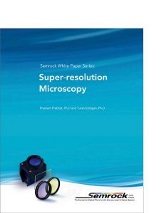
-
Spectral Modeling in Fluorescence Microscopy
by IDEX Health & ScienceGiven the critical role optical filters play in fluorescence microscopy, it is important to understand how such filters transmit both the desired fluorescence signal as well as the undesired background light. Learn more about spectral modeling in fluorescence microscopy in this white paper.
Full story
-
Spectral Imaging with VersaChrome
by IDEX Health & ScienceThis article outlines a novel approach to spectral imaging based on recently introduced tunable thin-film optical filters.
Full story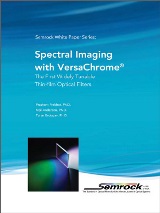
-
Semrock VersaChrome Tunable Bandpass Filters
by IDEX Health & ScienceVersaChrome has now made possible thin-film bandpass and edge filters that are tunable over a wide range of wavelengths by adjusting the angle of incidence with essentially no change in spectral performance. As a result, many optical systems can now benefit from tunable filters with the spectral and two-dimensional imaging performance characteristics of thin-film filters and the center wavelength tuning speed and flexibility of a diffraction grating.
Full story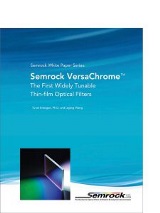
-
Pixel Shift in Fluorescence Microscopy
by IDEX Health & ScienceMulticolor imaging in fluorescence microscopy is typically performed by sequentially acquiring images of different colors. An overlay of these images is used to study the relative spatial distribution of various types of cellular components. However, in order to ensure that such a composite image is a true representation of the biological phenomena under investigation, it is important to understand imaging artifacts such as “pixel shift” error in multicolor fluorescence imaging.
Full story